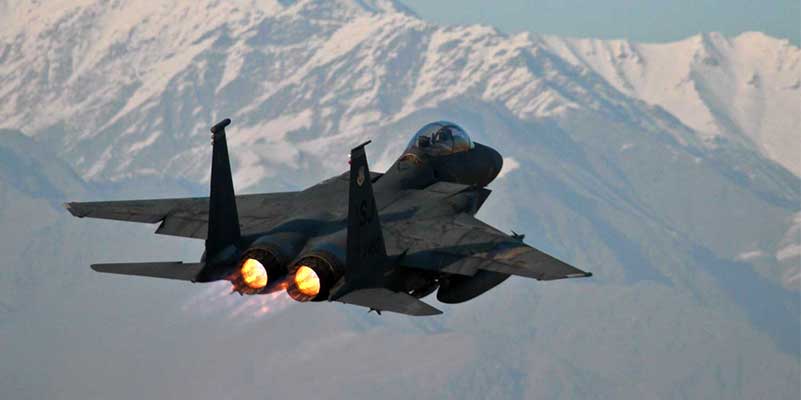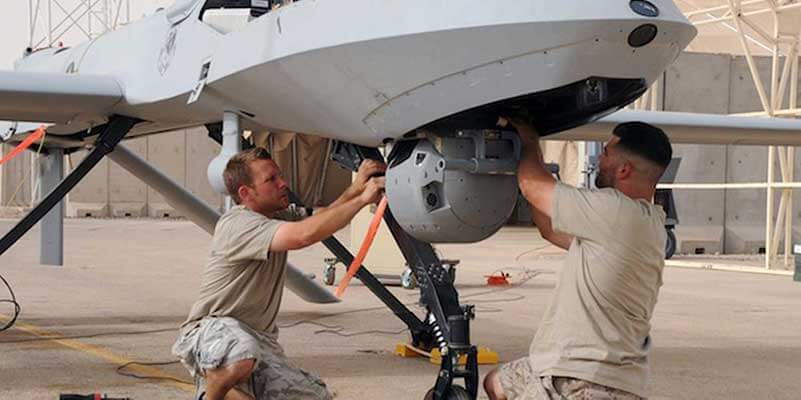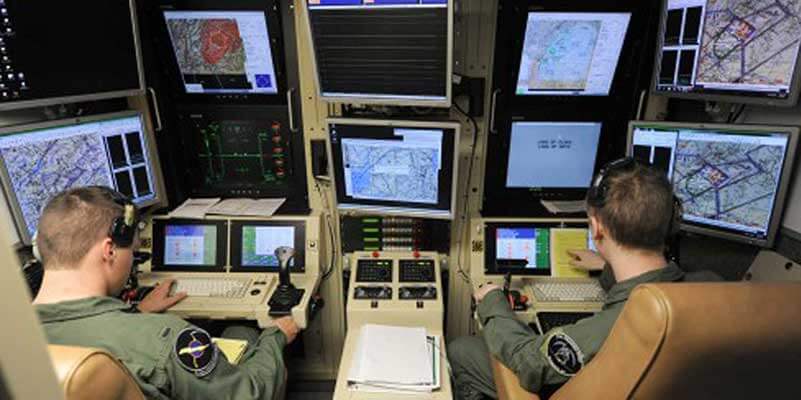Big data is an ecosystem consisting of data collection, storage, and computation architecture and analytics, which takes time to leverage. It also takes a great deal of research to tackle this huge monster of constant growth in information. Information is key to the air forces worldwide, and they need to control these mountains of data in order to structure it and make some use of it for their own benefit. It is not just the military aspect of it, but environment, tracking and surveillance as well. There are several purposes for which air forces are actually using big data today, and one of them is to cut down energy costs. Currently, work is underway for making an energy management system for air force bases, which would deploy a huge number of sensors that will receive and transmit data to gather information from light switches, valves, thermostats, air conditioners and any other sources where savings can be found! This way, building data on information such as the occupancy of buildings and the use of heating, ventilation and cooling units throughout the year, will make the maintenance staff better aware of the way energy is consumed.
Big data has many benefits and air forces are trying to make the best of it. For instance, imagine every piece of equipment informing the central system in the base of its current state, practically telling what is wrong with it or what needs to repaired. This would save a great amount of time for the engineers and allow them to focus on other important tasks. Equipment would take care of itself by informing repair teams what needs to be done, so they can schedule maintenance and repair accordingly and on time. This can be done by simple comparing to other tools and sensors, and transmitting to the engineers who are in charge of tracking this data. Engineers would never have to manually check each piece of equipment again! Wouldn’t it also be great if equipment could shout at the engineer? But I guess that might be too much.
Analysis of big data by today`s air forces is essential for decision making. There are several situations and opportunities that they cannot afford to miss. This is why all this data has to be harvested and properly structured. Air forces are using it for surveillance, spying, connecting the dots, and making a mosaic of information needed to predict and act. These are the main segments of future decision making as far as the air forces are concerned. One needs to take all gathered data, analyze it, weed out the most useful parts, and find best possible solutions for a potential situation.
Imagine an operation where you have the air forces indulged in a rocket missile attack and you have to find a perfect strategy of shielding it. Past defense systems were complex and dull to use, and this is by present standards a major flaw. The system needs to be fun to use, even though it covers a serious situation. It has to be constructed in a way that analyzes data needed to protect the aircraft, and also makes a decision and alerts those who need to be alerted – and all this in a simple algorithm! Let’s say we have an operation involving pilots who need to bomb targets in an enemy territory. What is the best possible way to lead them? Tablet-like devices for leading pilots to their targets has proven to be an excellent option. Decision making and helping those who execute operations in the air force is most important, and this is exactly what big data is supposed to do – predict, decide, and lead to execution.
Big data for structuring air forces
The United States Air Force uses an enterprise data warehouse from Teradata to track millions of aircraft parts at 82 major bases worldwide, log every mission, schedule and record maintenance, and perform 70 million-plus updates each month in near-real time. This shows how air forces can quickly and confidently make accurate decisions that have the potential to affect countless lives. It gives commanders the strategic ability to know what’s available to deploy, allowing them to make more rapid decisions. It is not only important to make the right decision but it often needs to be rapid as well; else, consequences can be severe. Big data is not only helping the prediction of future decision making in air forces; it is also making these decisions fast and accurate based on previous experiences.
Performing analysis on big data can be an overwhelming task, no matter how much experience an analyst has. Sometimes, we have spreadsheets with few hundred columns or tens of thousands of rows. It’s very difficult to traverse those things. Now imagine if you have hundreds of thousands of such spreadsheets and you’re trying to correlate everything manually. It’s almost impossible for a single person to do so. This is where big data comes in. It helps structure all this information and makes sure you do not skip anything important. What if you have few rows of important information amongst thousands of them and you skip it? It creates a huge impact as the human error drives you to a wrong conclusion, based on which you make a wrong decision which costs lives. A centralized system which harvests all this data, analyzes it, emphasizes what and where it needs to be pointed, and what is of great importance will make sure you do not make a wrong decision, unless you really want to make a wrong one. This would narrow the conclusions and guide the analyst in the right direction. Many risky events could be predicted in this manner and many disasters could be prevented as well.
Air forces are currently struggling with the problem of capturing only important data, or harvesting a significantly reduced data, while at the same time being picky about choosing what is important and what not. It is impractical to store every piece of data out there, and thus it is important for air force technologies to find software which is going to deal with this dilemma of important data on its own. The goal of these software projects, such as the Processing Exploitation and Analysis of Large Data Sets (PEALDS) program, is to enable observers to sift quickly through terabytes of collected sensor data to provide war fighters with actionable information. Big data analysis tools need to create a picture of a battlefield or area of interest that can be monitored in real time as well as stored and replayed! By merging sensor streams with data tagging and trend detection software, this capability will allow analysts and war fighters to observe, track, and potentially predict enemy force operations based on their observed behavior.
What are the best practical uses of big data in air forces today?
For starters, we can talk about health monitoring systems on planes. These are making military platforms more intelligent; it’s not just health monitoring that is crucial, but equipment monitoring as well. Such systems can predict a failure weeks or months in advance using patented algorithms that monitor the behavior of an individual piece of equipment. It is indeed a costly affair, both financially and in terms of availability, for an army to have aircraft out of action. Imagine how much the value potential would be in software that can inform the army of any equipment breakdown or need for repair? If the maintenance staff is alerted on time, they can focus their resources on preventative action during scheduled services rather than checking systems that are not broken or likely to break.
See also: Four big data trends that are revolutionizing life as you read this
Currently, the military can compare and analyze behavior of equipment, such as tanks, by itself. They can predict a particular issue in a certain piece of equipment, such as a Challenger tank, where there is a failure mode happening in 1.5% times or every 1000 hours. However, this type of analysis is too manual, and it cannot give the army a chance to exactly predict which platform will have which issue and when. There are software such as Smartsignal, which treat every asset as an individual, taking around two weeks to monitor its behavior though standard on-board sensors to create a multi-dimensional picture of how the values relate to each other when the asset is operating in a healthy state. Basically, it tells you about engine temperature, pressure, and what to do when a problem occurs. Such software is really what the army needs. It is essential to have a simple interface and commands, and be punctual with informing an operator about the issues that might occur.
How can big data change the way air forces work?
There are four key segments big data contains which can completely change the way air forces work in the future. Big data shapes intelligence by assessing, explaining, anticipating, and delivering results. How can it assess? Well, data is nothing if not for assessment. Assessment is how intelligence determines what our consumers should be concerned with—and how concerned they should be. What if there was a military strike against a terrorist target in a Central Asian nation, using an unmanned aerial vehicle?! Commanders want to know the success of the strike. An analyst, drawing on near-real-time imagery and past information about the site and activity around it, uses an application that detects all changes. In addition, the application provides a visualization of the reactions of people as well as objects in the target vicinity. Synthesizing this information rapidly, the analyst can provide near-real-time battle damage assessment to the commander, reporting that the primary physical target was destroyed, bodies were present, and vehicles appeared to take some persons away from the target area at speed. Furthermore, big data explains stories, relates events, and identifies what is going on. Let’s say there are two different potentially dangerous events of civil unrest in neighboring countries. These events and what unfolds in the meanwhile were difficult to assess in the past, as data and information sets are often segregated by type of source and regional assignment.
Analysts are asking those who are known to be working with the problem. With the new system of work, they could be automatically alerted when a certain problem occurs, if it is similar to other closely related events, which would expand the avenues for collaboration and multidisciplinary approach, making the job of an analyst in military much easier. Big data is also used to anticipate future events and situations, giving analysts multiple options and helping them to choose the best action for the outcome they want to achieve. It includes near-term warning and forecasting to alert and prepare decision makers to events relevant to their responsibilities. Car bombing, for example, could be prevented by creating a template to warn analysts of a potential danger, which they can then report to the base leadership and security teams. Big data analytics can incorporate personal experience into applications and use it to deploy data to analysts, helping them recognize potential dangers more rapidly. Big data also delivers intelligence, which is the final phase of its path of prediction analytics.
Imagine a flag officer in a theater combatant command position reading a classified daily briefing on a digital pad. One item, for example, deals with a past day event of a U.S. reconnaissance platform being intercepted by an adversary military fighter. What if he could tap certain items in the pad, such as “recent recce intercepts” or “recent provocative incidents” and discover several ship confrontations in international waters and an intelligence estimate about increased provocations intended to influence an upcoming Secretary of Defense military visit?! Big Data clearly offers so many perspectives in the air forces, from gathering important data to selecting it, deploying it on time to prevent a potentially dangerous situation, to predicting future outcomes. It is clear that prediction analytics will be a major part of air forces in the future, and military in general.
Big data and how it can be used in militaries from a wider perspective
The army is always interested in systems that will allow them to produce more intelligence in military operations. There are also many examples of how big data can be connected to other military means and effectively used in many different situations. Surveillance is one of them. Army is already using technology such as drones for surveillance. Drones can send data which they gathered while flying over an area of interest and notify users, giving them access to this data immediately. Events which happen during surveillance can also be stored with the larger body of content across the enterprise, allowing the user to respond in real time and immediately initiate exploitation tasks and forensic analysis. From a smartphone to a command center, the user can manipulate the system like a DVR, rewinding back in time to track the developments in the area of interest leading up to that specific event. This instant form of intelligence can have a critical impact on safety and outcomes in the field.
Video Credits: TVpics
Wouldn’t it be fun to be able to rewind the battlefield? Imagine you have a recording of the battle, and you can rewind it and slow down every piece of it, analyzing every single situation! This could create havoc in the future of military strategy. Information is key to all doors, and battlefield is probably one of them. Big data can even be used on the sea, with passive sonar. With data analytics, you can classify and track vessels based on the detection and analysis of their passive noise signature! You could also look for patterns in the stored, historical data that may represent, for example, gradual threat signature changes over time.
Military can use big data for spying! Military intelligence analysts regularly sift through vast and varied data sets, including a big data-style mash-up of email, cellphone records, newspaper articles, video clips and audio snippets of phone conversations. In line with this, big data poses a huge problem for the military as well. What if the army collects too much data with all these systems and machines? There are mountains of data being collected by vehicles and sensors, and with emerging technologies, there will be even more! How can all this be structured and analyzed so that it does not give the army a headache? The future will show how all big data technologies will be implemented. Mining it is left to algorithms, and this could be presented to humans by visualizing it in a 2D/3D environment.
Analytics can and will save money and time for military. Analyzing potential threats and places where army can expect a problem could help them deploy teams of soldiers or artillery to simulate a past situation which was replayed and analyzed! A summary of all practices and ways big data could be used by the army gives a wider perspective of its benefits. You can fly over an area with drones and send the data to the operation center. You can record the battlefield and later replay it, while the software can select and alert you about the most important data. In the end, you can compare data and have the best possible prediction and solution recommended to you for further action.
Share via:





